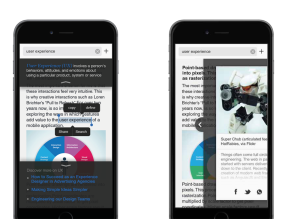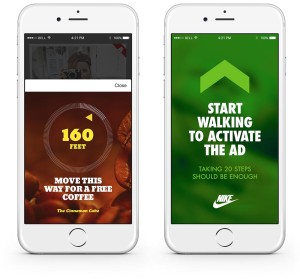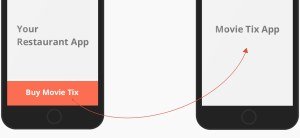Web publishers and advertisers are both increasingly attentive yet equally frustrated at the lack of viable ROI on mobile web. A recent report cites mobile web use has doubled over the first half of 2015. With opinions widely changing about mobile’s “other opportunity” besides the app space, it’s no wonder Google, Apple and Facebook are now in a tug of war over the direction of the entire mobile web. Apple’s recent addition of iOS9 caters to ad blockers, in an effort to streamline the web, and push the traffic elsewhere, some would argue. At the same time, Facebook is attempting to speed up it’s mobile content through the Instant Article program. In parallel, Google has recently launched its own initiative around Accelerated Mobile Pages. All of these efforts can be seen as an investment in the future of mobile web, each with its own brand of interest.
And while platforms increasingly turn their attention to “fixing” this medium, publishers and advertisers have more immediate concerns. Speaking to both large and small publishers these days, you get the sense that mobile is no longer simply a new frontier, but presents its own challenges. Roughly speaking, traditional monetization and engagement tools are 50% less effective on mobile when compared to desktop performance benchmarks. There have been interesting attempts to quantifying this gap in performance, and it’s likely a complex argument. Pages per visit, time spent and overall engagement on mobile sites seem to be lower according to these reports. And as far as banners go, to be effective, a publisher must be dangerously aggressive, using full screen formats, often populated by sketchy ads. Unless you’re a top publisher, able to bring in large crowds, you’re unlikely to be able to draw direct premium advertisers to your site.
And so, with mobile now providing over 40% of site traffic and rising, mobile monetization is turning to innovative products to solve this case. Publishers can no longer afford to stay within a desktop paradigm of merely a smaller or responsive design of banners. A move to an entirely mobile state of mind is required, and it offers an alternative to traditional display and banner advertising. Aside from the general push to native advertising, there are other approaches breaking ground these days.
This change is producing interesting concepts for a new sort of engagement and monetization approach on mobile, guided by the multitude of sensors, unavailable on desktop. Here are a few of them:
errnio‘s approach to mobile web engagement and monetization is unique in it’s ability to help publishers and advertisers customize gestures on mobile web. For every gesture based interaction, such as finger swipes, scrolls, zoom actions, or taps on the screen, errnio provides the publisher an enhancement set, with added engagement features. This also integrates revenue capabilities into the action, without resorting to display advertising.
Adtile’s approach to location and movement in creating new formats for brands generate meaningful interactive display experiences. Adtile Motion Ads take advantage of the smartphone’s GPS, gyroscope, motion coprocessor, accelerometer and compass, and create qualitatively different display units, which generate engagement with the ad, first and foremost. “Motion-sensing technology is a form of art.”, sais Nils Forsblom, “The art form just changes once technology advances to new mediums”.
Deeplinking apps into the advertising experience is also coming of age. In addition to new format concepts and smart ad technologies, companies such as Deeplink.me are ushering in a new paradigm in search and PPC. Deeplink’s AppWords platform is a tool to connect the app ecosystem together based on signaling that is totally unique to mobile usage. AppWords is a search engine, but instead of the user doing a search to find content, the search comes from the app where an action just occurred. For instance, if a user just booked a hotel in Boston in a travel app, and they have a ticket booking app, the solutions might show them an ad to buy Red Socks tickets for “tonight’s game”. These conversion strategies, which target directly into apps, a far more practical in a mobile environment.
As these technologies grow with the industry, we’re likely to see them adopted on a wider scale. AdTile today boasts large brand with Furtune 500 companies such as Nike, and features on leading websites, while Deeplink.me now partners with brands such as Urban Outfitters and Shazam. Errnio’s platform today shows a growth of 30-50 publishers a day, with a self serve platform catering to thousands of active sites. As the industry grows, technology such as this serves to improve the overall experience for users, and the utility to advertisers and publishers, in an increasingly dominant part of the web.








